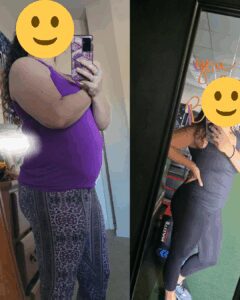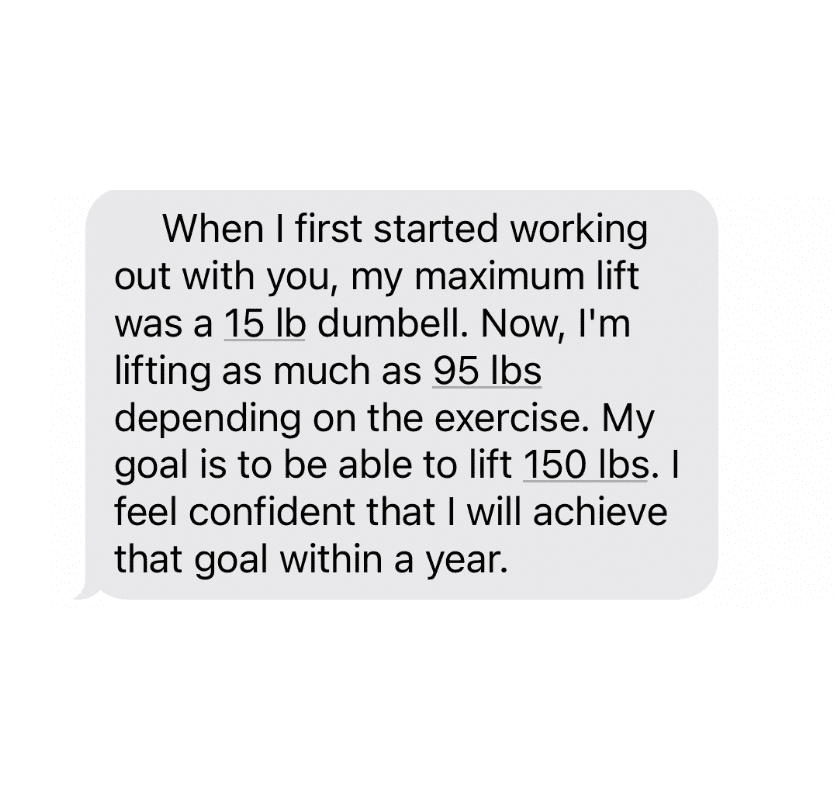Lifting for Women Training Program
You’ve built a strong foundation. Now it’s time to train with the precision and structure that takes your physique and strength to the next level.
Intensive Coaching Program [3 months]
Record yourself performing variations of foundational exercises. You’ll receive detailed instructions on how to perform each move correctly to ensure accurate assessment.
Receive your unique workout through our training app straight to your phone. This includes video demonstrations, exact reps, sets, progressions, and intensity guidelines.
Track your progress, access workout details, and get personalized guidance
Stay connected and track your progress with personalized monthly video check-ins. These sessions allow us to review your goals, discuss your progress, address any challenges, and make any necessary adjustments to your program
Receive real-time program modifications to fit your schedule and any unforeseen challenges (travel, work obligations, gym vs home).
Get personalized nutritional support that support your fitness goals inside and outside the gym.
Train alongside women who take their fitness seriously. This is where you’ll find motivation, support, and real conversations about strength, performance, and results.
Join live monthly sessions where we break down key training topics that matter for building muscle and strength. Get your questions answered, troubleshoot your lifts, and connect with other women who are just as serious about progressing. Built-in accountability, expert education, and a community that lifts like you do.
Get all these benefits plus more...
Introducing
Lifting for Women Training Program
The training program for women who lift heavy but still want more!

We will review your recorded exerrcises, ensuring your safety. This way every exercise in your plan is perfectly tailored to your needs.
Your plan will be as unique as your fingerprints. It includes video demonstrations, detailed reps, sets, progressions, and intensity guidelines, all delivered through our training app straight to your phone. This ensures you know exactly what exercises to do and how to do them safely, giving you everything you need for a successful and confident workout.
Track your progress, access workout details, and get personalized guidance
If you're ready to:
Lifting for Women Training Program
This is perfect for you if:
This is not for you if:







Questions other women had before choosing to invest in themselves and completely transform their health
Do I have to have a gym membership/access to equipment to be successful with this program?
Yes, you’ll need either a gym membership or home workout equipment like dumbbells, kettlebells, barbells, or resistance bands to have success with this program.
How will I receive my workouts?
All workouts are delivered through the Lifting for Women Training App. This app is your go-to hub, providing you with video demonstrations, exact reps, sets, progressions, and intensity guidelines. Plus, it tracks all your progress and performance throughout the plan.
What if I have an injury? Can I still participate and have success in the program?
Absolutely! As a physical therapist, I am able to create programs that allow you to continue to exercise and train while actually rehabbing from your injury or further exacerbating it.
Can this program work for someone who is brand new to lifting?
Yes. You are able to see the same kind of success as someone who is not brand new as long as you are consistent, execute the program as it is given to you, and are inquisitive and coachable.
© 2025 KEYP IT FIT, LLC | All rights reserved.